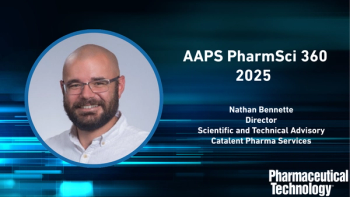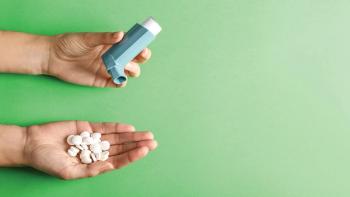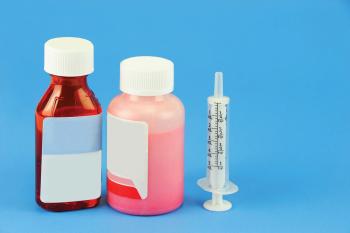
Pharmaceutical Technology Europe
- Pharmaceutical Technology Europe-02-11-2011
- Volume 23
- Issue 2
Prefilled Syringes: Challenges, Innovations And Market
The pharma industry is constantly seeking drug delivery technologies that can increase compliance, improve the quality of delivered care, reduce medication errors and reduce the possibility of admixture-related contamination.
This article is part of a special feature on injectables that was published in the February issue of PTE Digital, available at http://www.pharmtech.com/ptedigital0211.
The pharma industry is constantly seeking drug delivery technologies that can increase compliance, improve the quality of delivered care, reduce medication errors and reduce the possibility of admixture-related contamination. Prefilled syringes, along with premixed infusion bags, are singledose, readytouse delivery systems that have the potential to positively impact patient care. From a pharma company's point of view, prefilled syringes can also contribute to a product's overall success.
Raul Soikes
Advantages of prefilled syringes include:
- Ease of use. Prefilled syringes meet the demands of physicians and patients for effective and easytouse administration methods.
- Reducing medication errors. A medication in a readytouse format, in conjunction with other related initiatives, can help reduce medication errors.
- Lifecycle management. Moving a product from a vial to a syringe may provide differentiation from competitive agents in the same therapeutic category.
- Pricing. Economic advantages may also be possible for pharma manufactures. Prefilled syringes meet the stated demand for increased safety and convenience, and may present the opportunities for premium pricing compared with vials.
Manufacturing benefits and cost savings can also be realised because prefilled syringes help increase the saleable yield of the API. API filling in prefilled syringes is precise to the dose required. Only trace amounts of API remain in the needle of a prefilled syringe after injection, as opposed to single or multiuse vials, where it is necessary to overfill the API by 20–24% to ensure that an accurate dose is pulled into the syringe each time.
Prefilled syringes also offer savings from a capital investment perspective. Vial washing, depyrogenation and vial component preparation equipment are not required because the syringes come presterilised and ready for use. Also, increased efficiency can be achieved by leveraging modern automated filling technology with barrier isolation systems, which can offer fill–finish lines with smaller footprints, higher throughputs and longer validation windows.
Manufacturing challenges
Biotech products, in particular, provide a number of unique manufacturing challenges compared with big therapeutic classes, such as anticoagulants and vaccines. The trend towards readytouse delivery systems combined with the decreasing manufacturing volume associated with biotech products and more targeted therapies poses an efficiency challenge. Batch sizes are typically smaller, requiring potential innovation and manufacturing optimisation to provide sustainable value.
For contract manufacturers, there are also complexities related to global regulatory compliance because there are marked differences in the expectations and best practices of key regulatory agencies. For example, specific structural changes needed for one client to ensure regulatory compliance may impact others using the same manufacturing line. Finding appropriate solutions to accommodate the broad spectrum of client and regulatory requirements is an intricate responsibility of utmost importance.
As with other sterile filling, such as vials, another challenge that can arise is the need to calibrate automated inspection equipment to meet the standards of multiple regional regulatory agencies, as well as client expectations. There is also often a lack of validated data to adequately handle product physicochemical limitations, such as air and/or light sensitivity, time out from refrigeration, shearing concerns and others.
Innovation
There have been a number of recent innovations in prefilled syringes:
- Restricted access barrier systems have had one of the biggest impacts on the sterility assurance of prefilled syringes.
- Electron beam sterilisation tunnels for the aseptic transfer of prefilled syringe tubs provide benefits by delivering high throughput and high levels of sterility assurance.
- Non-destructive control and inspection advances, coupled with improved cold chain management, are of great advantage to minimise the waste of highcost biologic APIs.
- Enhanced readability of fluid levels and accuracy of fluid draw helps ensure appropriate dosing.
Despite the advances made so far, there is still room for further improvement. There has been an increase in the requirements for documented processing and control of the glass syringe throughout manufacture including: tube processing, forming machines (including closedloop controls), ammonium sulphate treatment, coating and annealing controls, leachable and extractable analysis, dimensional and cosmetic inspection, needle assembly control, WFI washing, siliconisation, shield assembly and nesting. The systems that support the timely availability of this data will need to evolve and improve to support the requirements of pharma and biotech companies.
As drugs evolve to more targeted applications, manufacturing flexibility will be crucial. From a CMO's perspective, innovative equipment that supports this flexibility and optimisation (e.g., equipment that can handle multiple safety shield vendors with minimal change parts) will be very important. Another improvement that would be welcomed is easy interchangeability in fill and inspection equipment for glass and plastic syringes, which would increase efficiency and provide more flexibility.
Specifically for biologics, a siliconisation process or suitable substitute is needed that has zero to minimal impact on the biological material. New tools for funnel forming combined with lower forming temperatures currently provide the lowest Tungsten content, but alternates are needed, as this would improve stability by eliminating the potentially detrimental Tungsten–protein interaction. Further understanding of product/container interactions is also required to ensure hydrolytic resistance of the syringe to prevent delamination, an issue in recent product recalls seen in the market.
Prefilled syringe market dynamics
To understand prefilled syringe growth, we look to external expertise from companies such as IMS and Frost and Sullivan. These two sources generally agree that the US market is growing at twice that of the European market. According to IMS data on prefilled syringes and pens (IMS MIDAS injectables data 2003–2009), the share of total injectable volume is roughly the same in the US and Europe (top five countries) at 20% and 18%, respectively. The market for prefilled syringes has been growing at 10% and 5.5% for the US and the EU, respectively, from 2003 to 2009. At the same time, the overall injectable volume (excluding vaccines) has been growing at 6% in the US and 2.5% in Europe.
Both regions have expressed the same desire to have readytouse delivery systems, such as prefilled syringes, widely incorporated into healthcare systems. However, economic uncertainty and related budgetary austerity measures are in place in both the US and Europe, and it is not immediately clear what impact, if any, these factors will have on the adoption rate of prefilled syringes or other preferred methods of drug delivery.
The world market outlook from 2010 to 2025 shows a range of therapeutic agents — vaccines, insulins, analogues and other biologicals — driving growth in the injectable and prefilled syringes sector. Important innovations will include advances in liquid formulation technology that enable protein drugs to be stable, as well as liquid prefilled packages and developments that enable the simple and cost-effective production of lyophilised formulations.
In my opinion, several factors will converge that ultimately impact the prefilled syringe market:
- The trend towards development of longer acting therapies will reduce the volume of prefilled syringes required.
- Scarce economic healthcare resources may contribute to a slowing rate of adoption of readytouse delivery systems. Prioritising relevant therapies in these delivery systems will also increase.
- Innovation and technical requirements relative to the potential for glass incompatibility with biologics could result in a volume shift between glass and plastic, without an expansion of the overall market.
- Legislation will also be an important driver in the demand for prefilled syringes, and it will be interesting to see what effect EU laws designed to reduce needlestick injuries have on the availability, pricing and share of doses delivered via prefilled syringes.
- Lastly, in Europe, glass syringes are considered to be a pharmaceutical component of the prefilled syringe, whereas the US FDA mainly regulates prefilled syringes under pharma product regulations. As such, for Europe, the glass supplier is the starting point in the production chain. It will be interesting to see what future developments hold for the glass syringe suppliers, and whether this leads to shared responsibility with pharmaceutical companies for a drug's integrity and efficacy.
Raul Soikes is Senior Director, Program Management, at Baxter.
Articles in this issue
almost 15 years ago
Trade show trade down?almost 15 years ago
Overcoming The Misconceptions Of Continuous Processingalmost 15 years ago
Generics Dispute EU-India Trade Negotiationsalmost 15 years ago
Needle-Free Injectionalmost 15 years ago
The Growing Importance Of Release Liners In Pharmaceutical Manufacturingalmost 15 years ago
Newsalmost 15 years ago
Trends Towards Standardisationalmost 15 years ago
Why Syringes Continue To Dominate The Parenteral Drug Delivery Marketalmost 15 years ago
Characterizing A Nasal Spray Formulation From Droplet To API Particle Sizealmost 15 years ago
Trends In Prefilled SyringesNewsletter
Get the essential updates shaping the future of pharma manufacturing and compliance—subscribe today to Pharmaceutical Technology and never miss a breakthrough.




